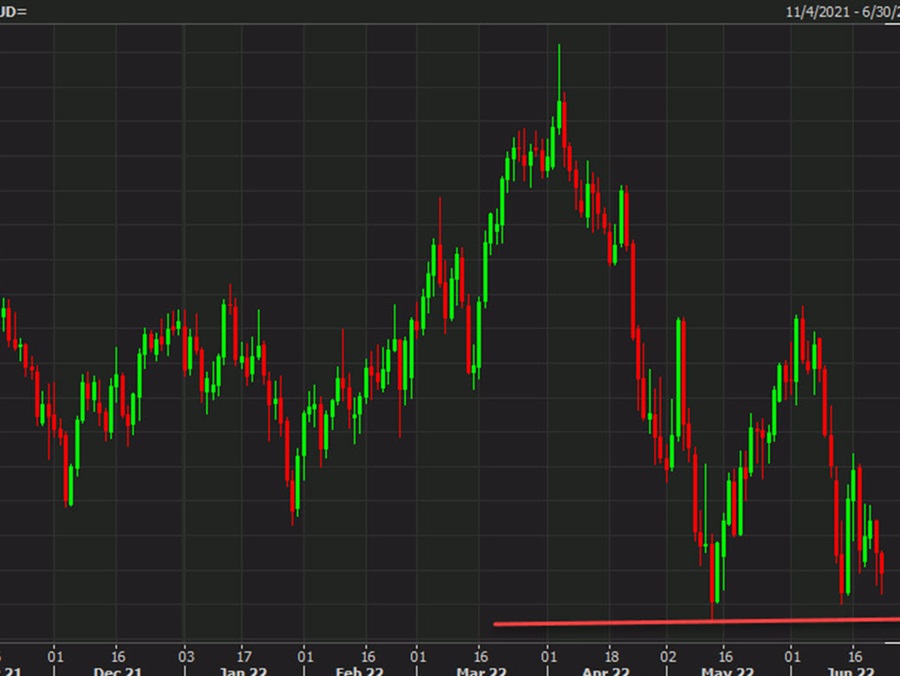The group of the Canadian, Australian and New Zealand dollar sits precariously close to the extremes of the recent ranges. There is the potential for double bottoms in all three but the price action today suggests little appetite to buy the trio as recessionary worries spread.
Copper prices are the lows of the year, Australian iron ore exports are struggling and crude oil has fallen sharply this week.
On the US dollar side of the equation, the market has pulled back the terminal rate to 3.5% from above 4% but the risks are higher in the commodity bloc if growth slows down, because that would also cause a rush to the US dollar.
CIBC continues to see dollar gains, before a reversal next year:
If you paid close
attention to Chair Powell’s press conference, you noticed
that the messaging on how much tightening is needed
has changed in a meaningful way. Instead of tightening
policy to neutral, it’s now all about getting policy to
restrictive levels by the end of this year, and saying that
loudly enough to try to impact inflation expectations. We
ultimately see slowing growth and a turn in inflation as
convincing the Fed to back away from what its most
hawkish members are now advocating, paving the way
towards a softer greenback in 2023. But that’s not going
to be apparent in the next few months, leaving the near
term risks still tilted towards the USD retaining or even
building further on its recent gains.
Technically, it’s a similar setup in all three. In May and June, they tested lows but rebounded. The problem is that the latest rebound appears to be falling flat and the breakdown of a double bottom can get ugly.
It’s a bit tough to envision on the fundamental side, but a breakdown below 0.6827 would target in the 0.6400 area.
USD/CAD continues to flirt with the 1.3000 zone but given the drops in oil and natural gas along with the housing bubble bursting and it could race higher. The Bank of Canada is also at risk of overtightening in a move that could make a recession in Canada particularly harsh. That kind of move would target 1.36/37, which is something I’ve been calling for.
Similarly, a break lower in NZD/USD could take it to 59 or 60-cents.
For now, I don’t think it’s worth betting on a break but if the recent lows giveway in all three, it will be a strong co-ordinated signal. I’d expect that to go hand-in-hand with further commodity declines and rising market volatility.
